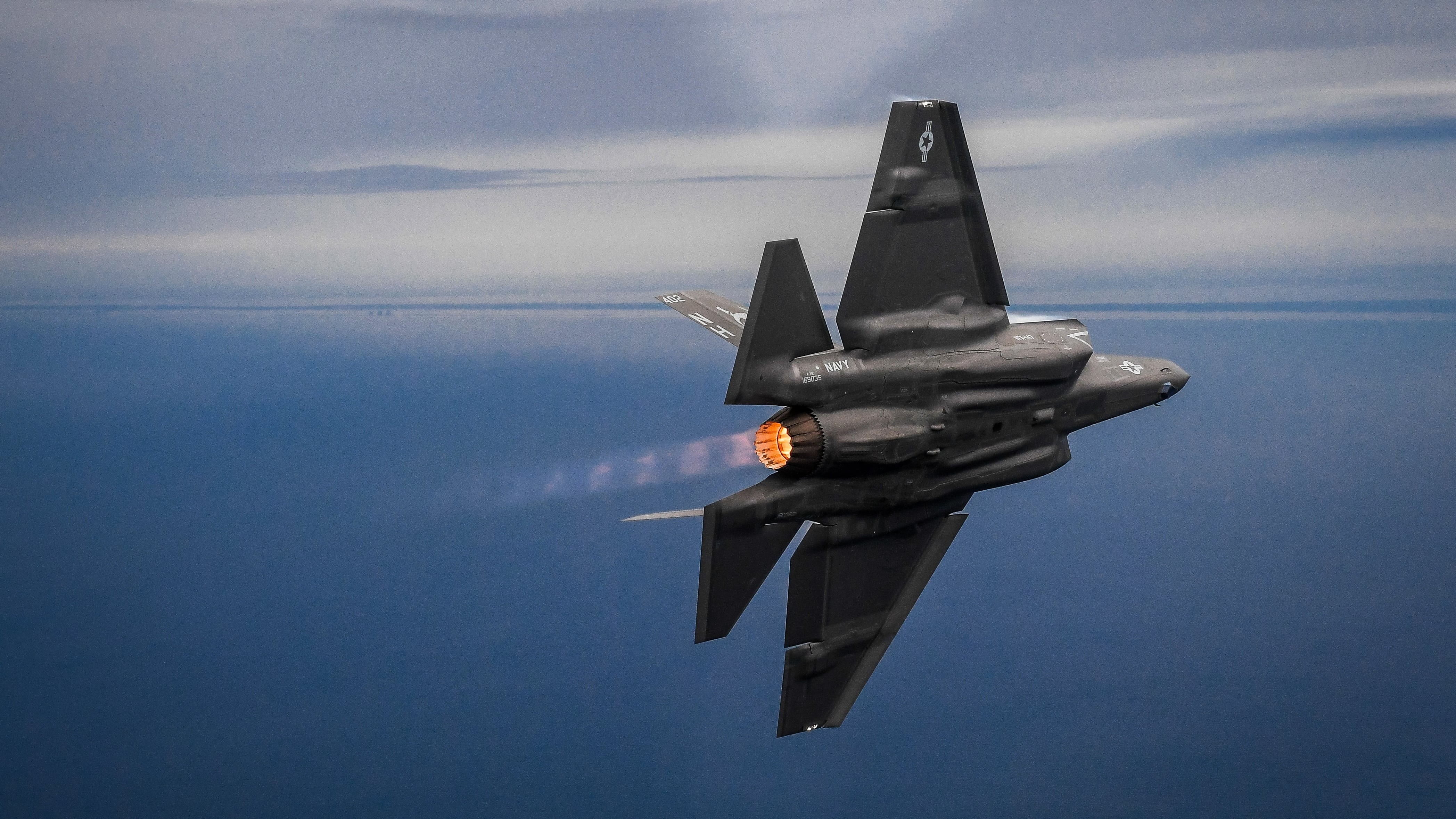MADRID — The Spanish Navy and Air Force are still interested in the American F-35 fighter jet, even though the government is about to join a Franco-German program to develop a new European plane.
The two services are in the beginning stages of an analysis in which the Lockheed Martin-made aircraft is emerging as a key contender, officials told reporters on the sidelines of the FEINDEF defense expo here in late May.
For the Navy, the choice for the short-takeoff-and-landing variant of the jet, dubbed the F-35B, appears to be more clear-cut than for the Air Force. The Spanish Navy wants to replace its 12 Harrier jets, which are launched from the LPH Juan Carlos I. That ship’s short, ski-jump deck makes the F-35B the only option on the market, according to Cdr. Antonio Estevan, a staff officer at the service’s plans and policy division.
“From a technical point of view, it’s a very interesting option for us,” Estevan said. “The problem is the cost. The version for us would be, as far as I know, $100 million; the Air Force version $80 million. We are talking about high prices. Even the American president was surprised when he realized the cost.”
Air Force officials, meanwhile, are keeping their options more open when it comes to replacing the service’s 84 Boeing-made F-18s. Twenty planes of the “A” variant, stationed on the Canary Islands, need to be replaced first, by 2025, according to Brig Gen. Juan Pablo Sanchez de Lara, chief of the Spanish Air Force’s plans division.
RELATED

Airbus has its eyes on that business and is offering to outfit the squadron with the Eurofighter. While that outcome is also the Air Force’s expectation, a replacement for the rest of the F-18 fleet, 64 planes of the “M” designation, is still up for grabs, according to Sanchez de Lara.
The two services cooperating on the requirements of a potentially joint program means the F-35 is on the table in some form or another, though it’s unclear how compatible the branches’ needs will be in the end. “For the Navy, it’s a very simple solution because they need an aircraft for vertical, short takeoff,” Sanchez de Lara said. “For us, it’s different.”
Both services want new aircraft by around 2030. That would be ten years before the Future Combat Air System program, led by Airbus and Dassault, is scheduled to field a new combat aircraft.
The situation in Spain is reminiscent of the choice Germany faced about the F-35, and the government’s decision earlier this year to ditch the plane as a contender to replace the Tornado.
The Luftwaffe, the German Air Force, was reportedly in favor of the American fifth-generation plane, while the defense ministry’s civilian leadership preferred an upgraded version of the Eurofighter Typhoon. Airbus had lobbied hard against the F-35, arguing that the pick of a new U.S. aircraft at this stage would effectively sink the entire FCAS project.
Meanwhile, two F-35s arrived at Llanos Air Base near Albacete, Spain, earlier this week for training with other NATO air forces, according to announcements from the U.S. Air Force and NATO.
During the Tactical Leadership Program officials practiced integrating the aircraft into a search-and-rescue drill to extract friendly forces from enemy territory, a June 11 alliance statement reads.
Sebastian Sprenger is associate editor for Europe at Defense News, reporting on the state of the defense market in the region, and on U.S.-Europe cooperation and multi-national investments in defense and global security. Previously he served as managing editor for Defense News. He is based in Cologne, Germany.








